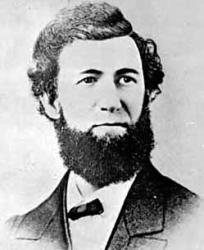Planning worship?
Check out our sister site, ZeteoSearch.org,
for 20+ additional resources related to your search.
- |
User Links
Search Results
The Children's Welcome
Author: B. R. Hanby Appears in 5 hymnals First Line: We are coming, we are coming, 'Twas a soft and silvery tone Refrain First Line: Hail, all hail, thrice welcome
The Children's Welcome
[We are coming, we are coming]
Appears in 2 hymnals Used With Text: The children's welcome
[We are coming, we are coming]
The children's welcome
Hymnal: Chapel Gems #d93 (1894) First Line: We are coming 'twas a soft Refrain First Line: Hail, thrice welcome let Languages: English
The children's welcome
The Children's Welcome
Hymnal: Chapel Gems for Sunday Schools #62 (1866) First Line: We are coming, we are coming Refrain First Line: Hail, all hail, thrice welcome Languages: English Tune Title: [We are coming, we are coming]
The Children's Welcome
The children's welcome
Hymnal: Chapel Gems for Sunday Schools #62 (1868) First Line: We are coming, we are coming Refrain First Line: Hail, all hail, thrice welcome Languages: English Tune Title: [We are coming, we are coming]
The children's welcome
B. R. Hanby

1833 - 1867 Person Name: B. R. Hanby Author of "The children's welcome" in The Charm Benjamin Russell Hanby was born July 22, 1833, the oldest of eight children, to Bishop William Hanby in Rushville, OH. The family moved to Westerville,OH where Bishop Hanby was a "conductor" on the Underground Railroad. In his short life Benjamin graduated from Otterbein, taught school, became a United Brethren minister, started a singing school, was editor for John Church publishers in Cincinnati and composed many songs and hymns before he died of tuberculosis March 15, 1867. His home in Westerville was Ohio's first memorial to a composer. It was a stop on the Underground Railroad for slaves escaping to Canada and is a national historic site, a Methodist church Landmark and a Network to Freedom site for the National Park Service. There is a Hanby Residence Hall at Otterbein University. Best known for "Up on the housetop" and "Darling Nellie Gray," Hanby published many hymns including "Little Eyes" and "Who is He?
Mary Louise VanDyke
B. R. Hanby


 My Starred Hymns
My Starred Hymns


